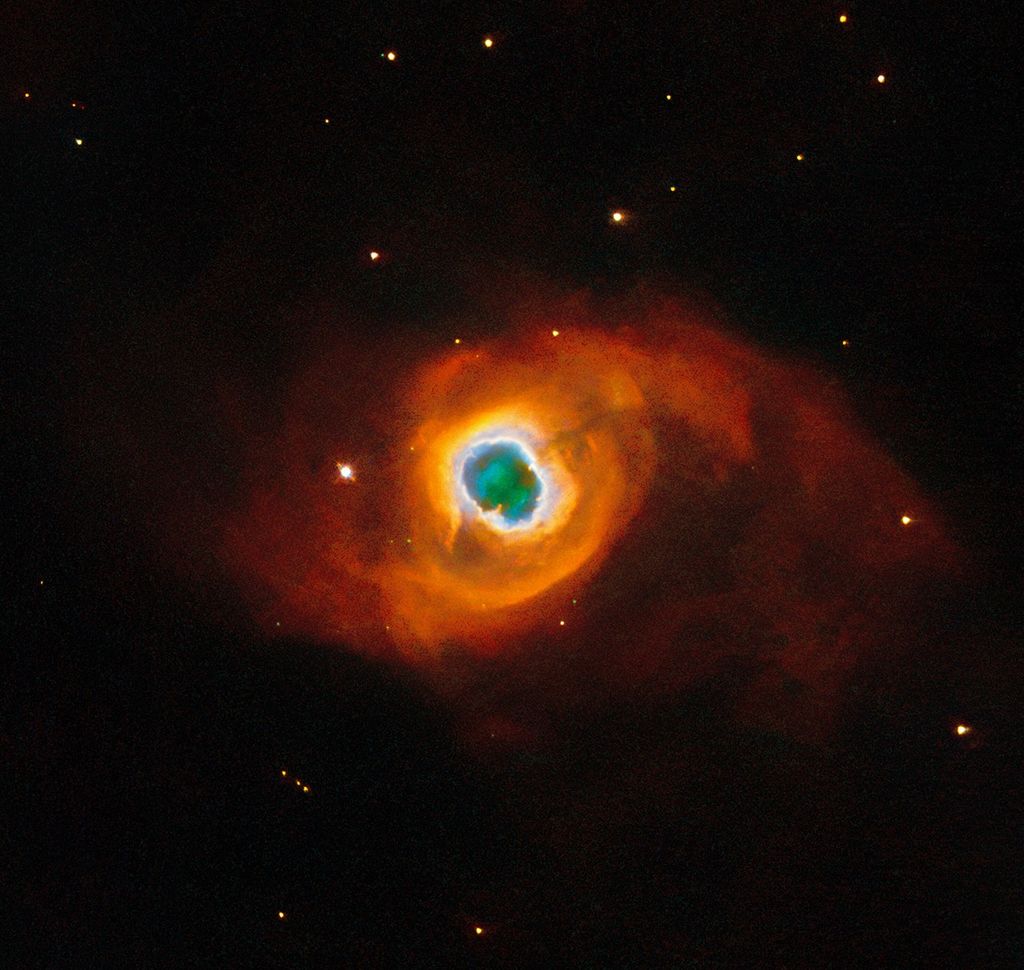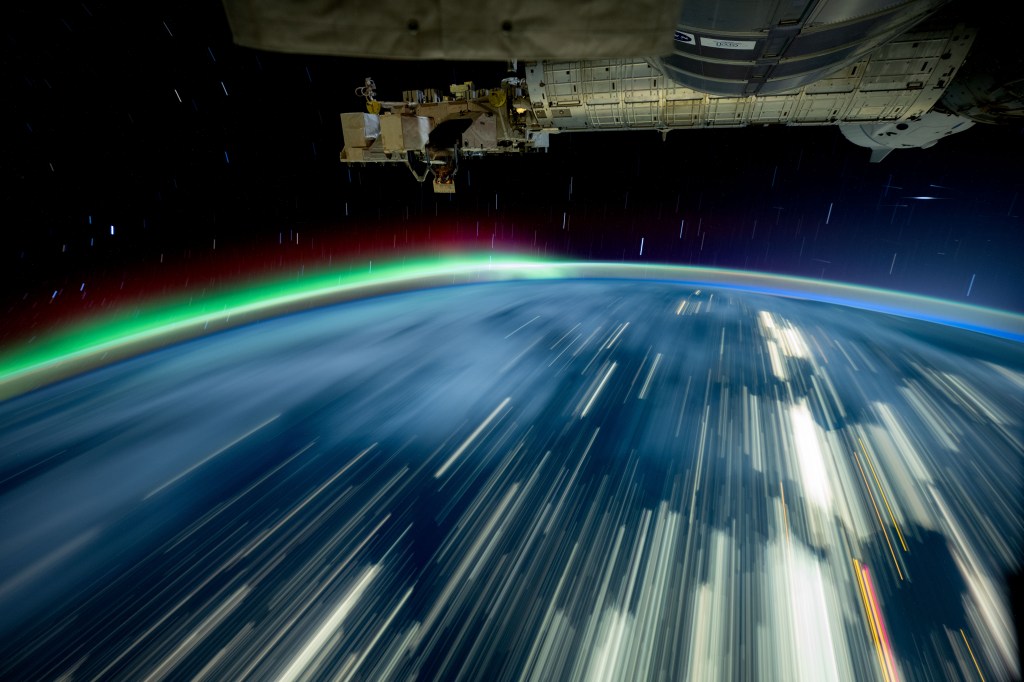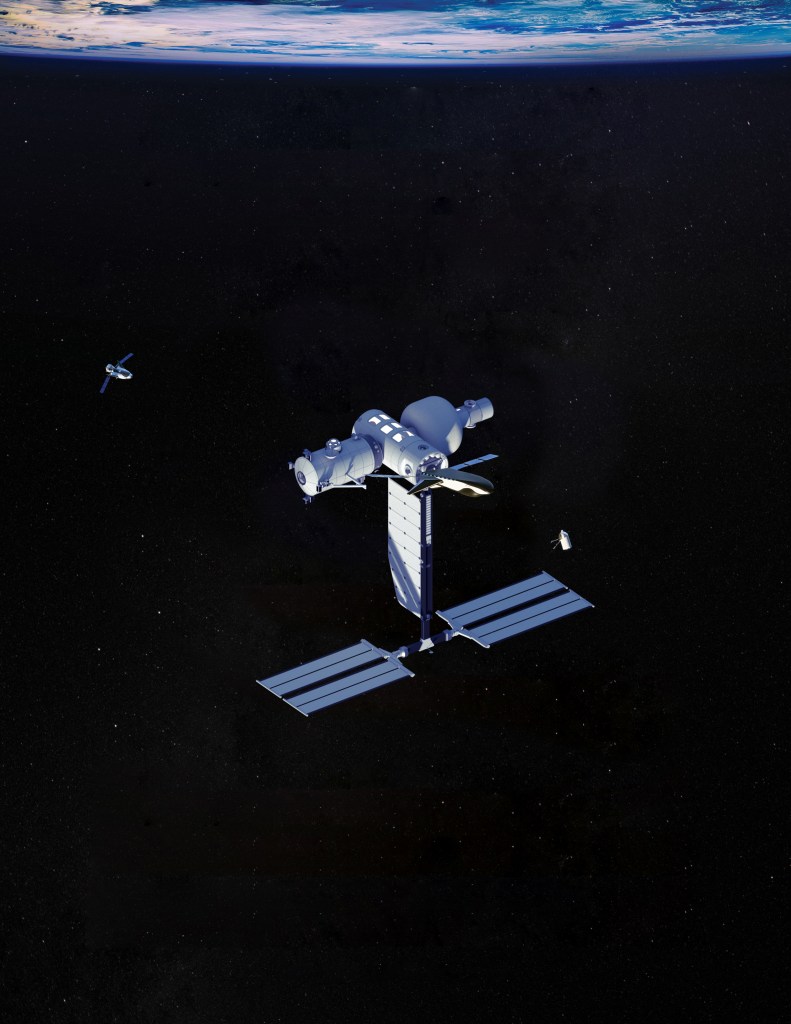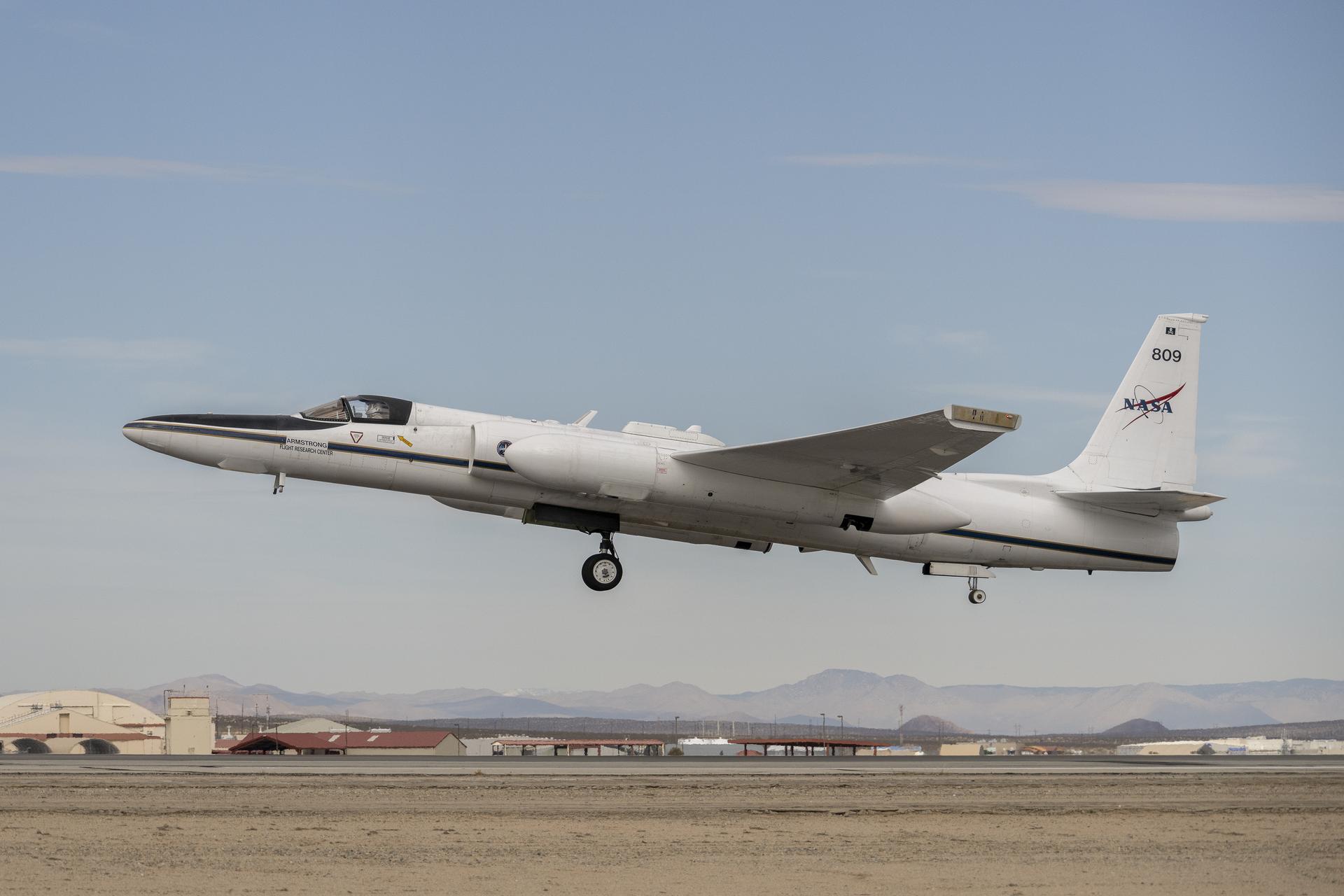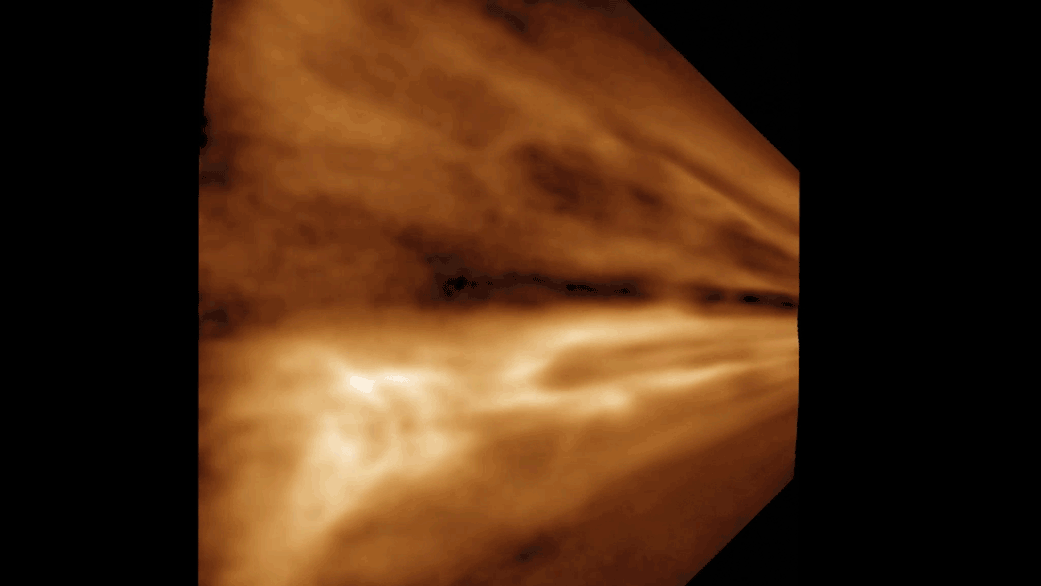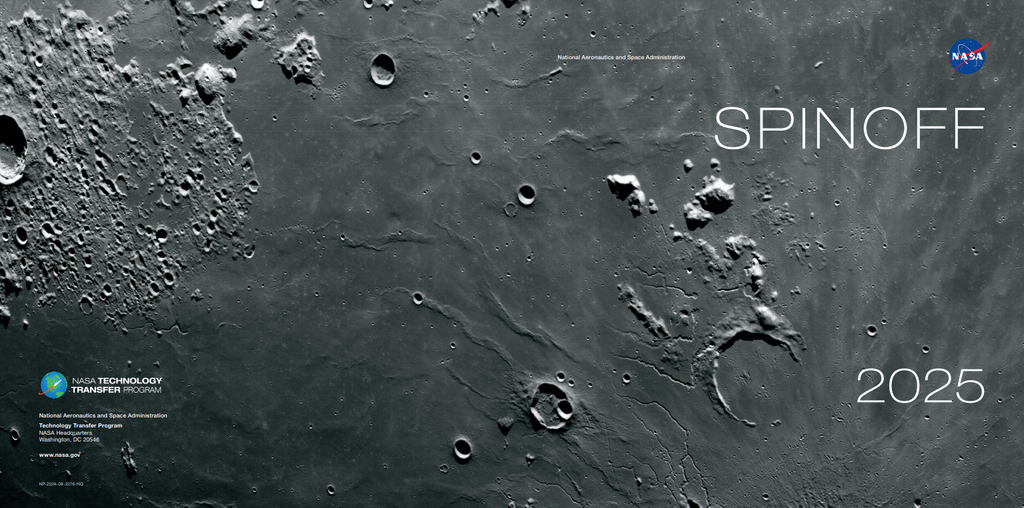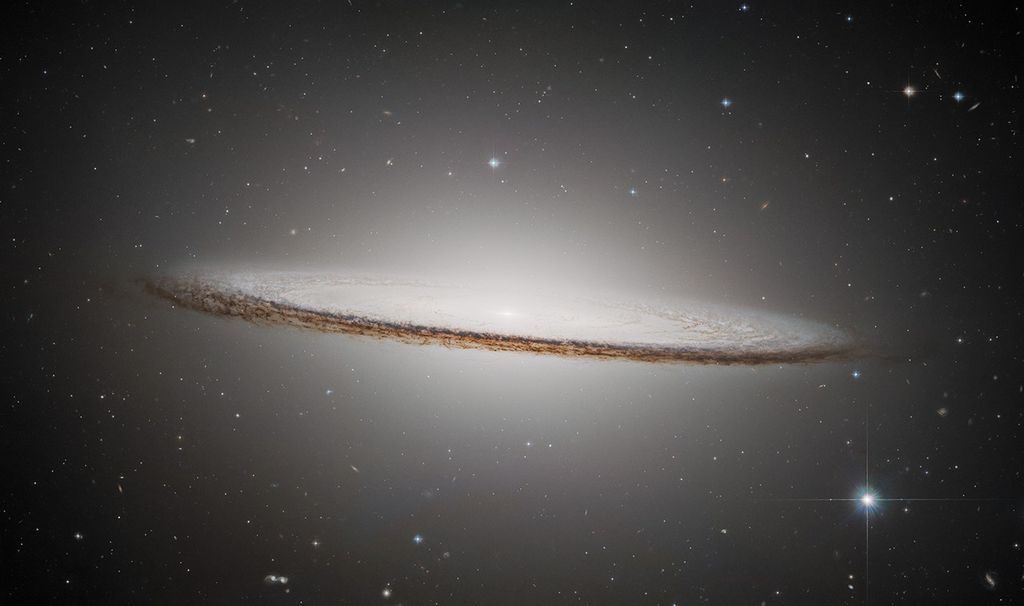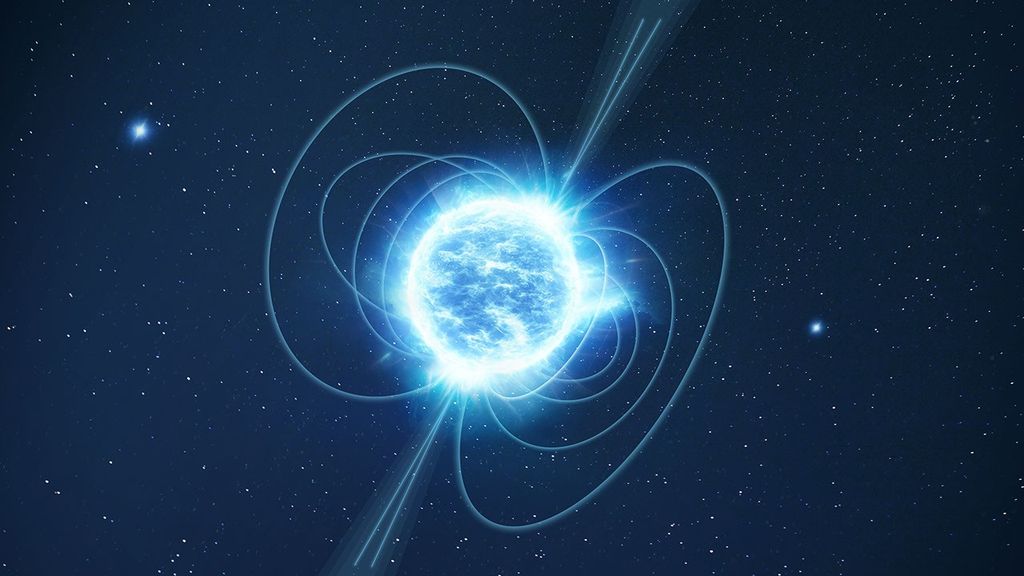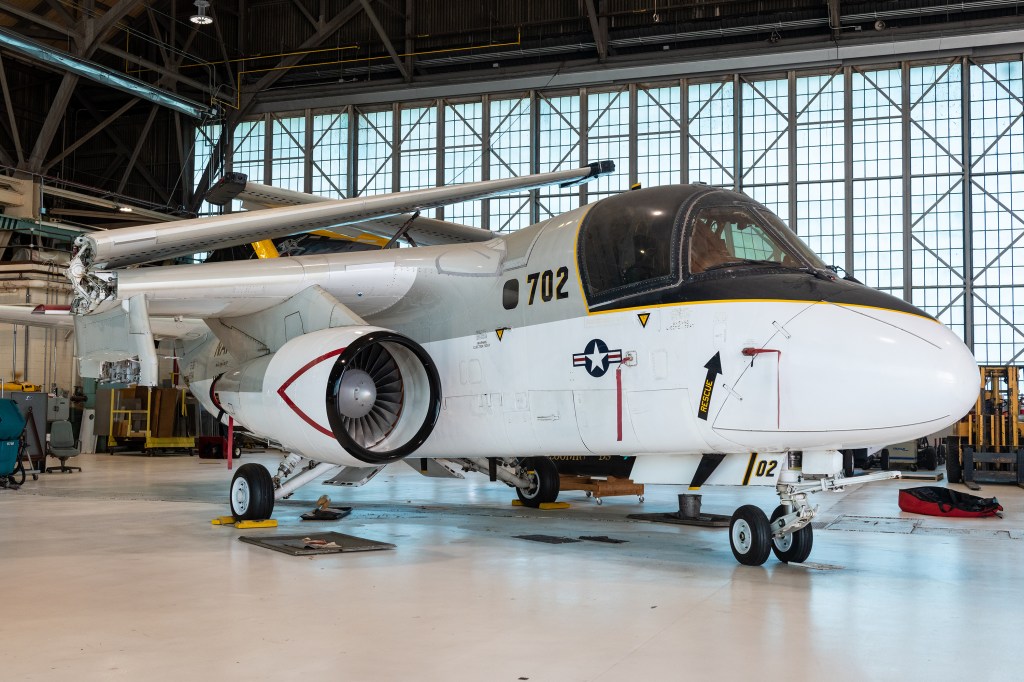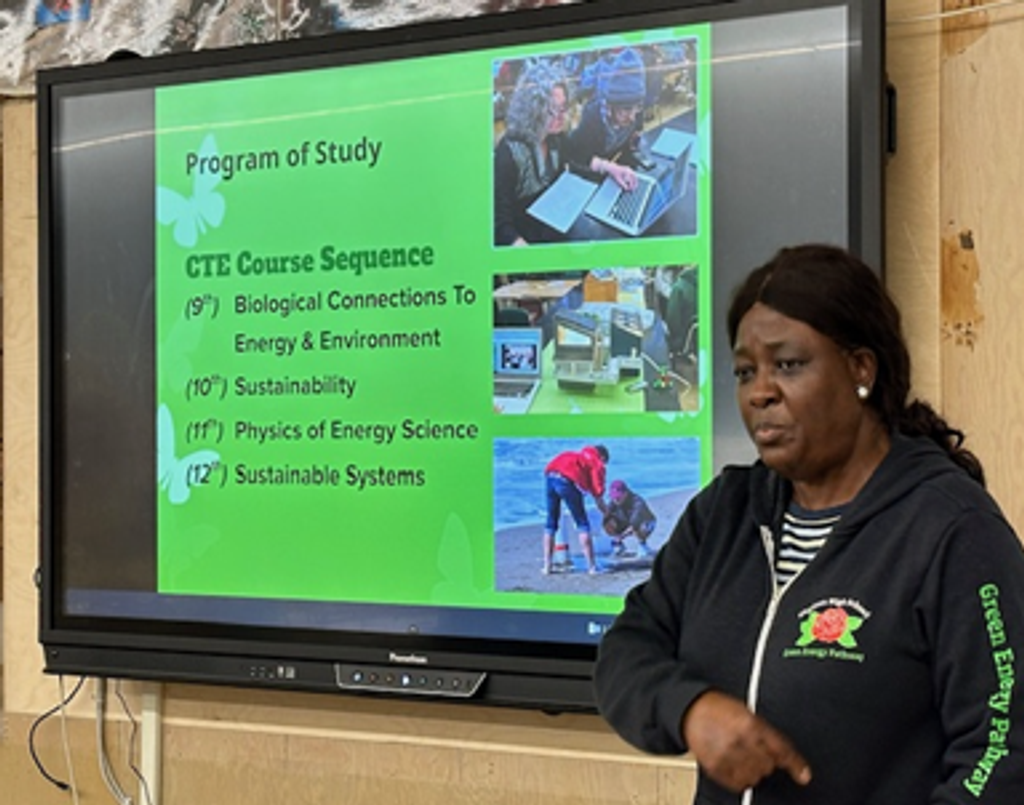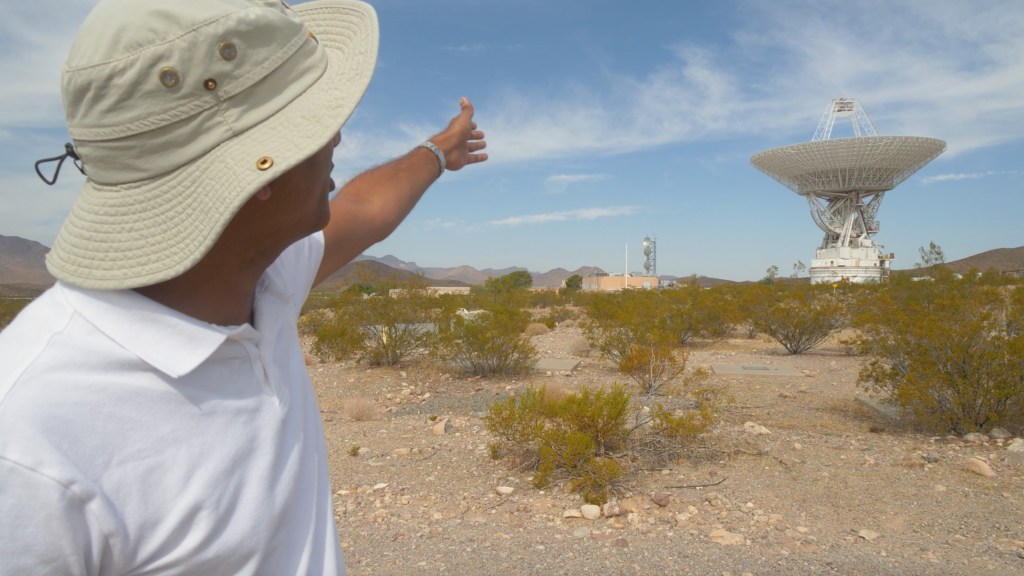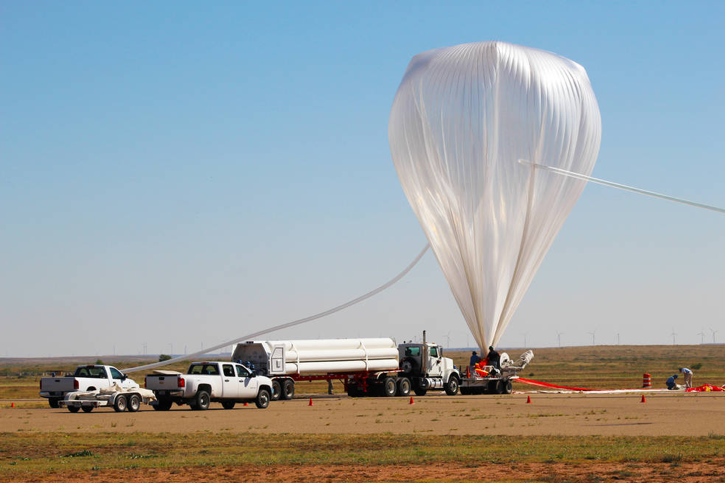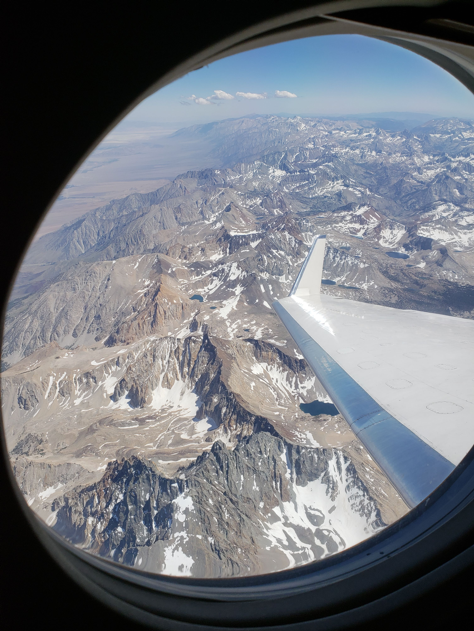The Answers to Life Are up in the Air
It’s easy to think of our atmosphere as just an empty space above the ground, but it’s home to a wide diversity of microorganisms, including bacteria, viruses and fungi. These tiny life forms may hold clues to big questions, such as where and how life evolved and if it exists elsewhere in the universe. Scientists in the Aerobiology Lab at NASA’s Ames Research Center, in California’s Silicon Valley, are working to develop methods to test how and how well different types of microbes survive in the extreme conditions of the atmosphere.
What is Aerobiology?
Aerobiologists study the organisms and particles of biological origin – known together as bioaerosols – that float around in our planet’s atmosphere. Some try to understand how bioaerosols get into the atmosphere in the first place – for instance, by thunderstorms, volcanic activity, fire or dust storms – as well as how bioaerosols are lofted by prevailing wind currents. Others study the impacts bioaerosols can have, like influencing air and cloud chemistry. More questions surround how long they can stay afloat in the atmosphere and how long and in what conditions airborne microbes can survive. In recent years, aerobiology researchers have also begun to explore whether our atmosphere might hold entire ecosystems of airborne microbes and whether interactions between species in the atmosphere can allow microbes to evolve while in the air.

Aerobiology and the Search for Life
Not only is aerobiology research rewriting the book on Earth’s atmosphere, it’s also helping us understand where life might exist elsewhere in the solar system, such as on Mars. For clues, scientists in the Aerobiology Lab study the microbes that live in Earth’s upper atmosphere and what happens when we send bacteria from the ground up that high. At those altitudes, they experience temperatures, air pressure, dryness and radiation conditions similar to those found on the surface of Mars. This can help astrobiologists – the scientists who study the origin, evolution and distribution of life in the universe – to conduct research here on Earth about Mars’ ability to support life.
Another link between aerobiology and astrobiology is that microbes are present in our atmosphere at a relatively low concentration, just as they might be on Mars or another planet. The sampling techniques that aerobiologists at NASA are developing to collect uncontaminated samples could help future space exploration missions searching for extraterrestrial life.
Aerobiology experiments and technologies developed at Ames and at other NASA centers are helping extend the frontiers of this research and reaching new heights in our understanding of life in the atmosphere.
Balloon Missions
Exposing Microorganisms in the Stratosphere 1 (E-MIST 1)
This experiment, led by scientists at Ames, tested a new hardware system, procedure and instrument for studying bacteria in Earth’s stratosphere, the atmospheric layer extending from about 10 to 31 miles up. Called Exposing Microorganisms in the Stratosphere 1, or E-MIST 1, this mission used a system that was developed at NASA’s Kennedy Space Center in Florida. A radiation-tolerant strain of bacteria called Bacillus pumilus SAFR-032 was carried inside the E-MIST payload, which was equipped with power, a control board for self-controlled operations, customizable electronics, environmental controls and sensors. Four rotating doors made it possible to expose up to 10 bacterial samples at a time to the harsh conditions of the stratosphere.
The E-MIST payload was mounted on a large NASA scientific balloon, launched from New Mexico, and tested in flight for five hours. The E-MIST 1 mission proved that data could be collected successfully from a tightly-controlled microbiological experiment within the stratosphere. E-MIST 1 was launched in 2014.
Learn more:
NASA story about E-MIST 1: NASA E-MIST Experiment Soars in Earth’s Atmosphere
NASA story about a similar study using balloons: Eclipse Balloons to Study Effect of Mars-Like Environment on Life
For researchers:
Research paper: “A Balloon-Based Payload for Exposing Microorganisms in the Stratosphere (E-MIST)”, Journal of the American Society for Gravitational and Space Research
Research paper: “Microbes in the Upper Atmosphere and Unique Opportunities for Astrobiology Research,” Astrobiology
NASA Science Mission Directorate fact sheet: Exposing Microorganisms in the Stratosphere for Planetary Protection Project
Exposing Microorganisms in the Stratosphere 2 (E-MIST 2)
The second Exposing Microorganisms in the Stratosphere mission, E-MIST 2, exposed the bacterium Bacillus pumilus SAFR-032 to Mars surface-like conditions to test how well they could survive. The E-MIST 2 payload was launched from New Mexico on a NASA high-altitude balloon and spent eight hours within the stratosphere at close to 19 miles above sea level. Here, the bacteria were exposed to the stresses of extremely cold, dry air, harsh ultraviolet radiation and low air pressure.
Samples were parachuted back to Earth for analysis, and the science team found that, after the eight hours of exposure, 99.999% of the bacteria were dead, damaged, or destroyed beyond the point of being able to regrow. The undamaged few showed small variations in DNA compared to samples of the same bacteria that stayed on the ground. Fully understanding the implications of these results will require further study, but the initial discoveries from the mission have provided significant insights for aerobiology, Earth ecology and astrobiology. The E-MIST 2 mission launched in October 2015.
Learn more:
NASA stories:
Nineteen Miles Up, Experiment Reveals Earth Microbes’ Likely Fate on Mars
For researchers:
NASA mission page: Exposing Microorganisms in the Stratosphere (E-MIST) 2015 Flight Mission
Research Paper: “Stratosphere Conditions Inactivate Bacterial Endospores from a Mars Spacecraft Assembly Facility,” Astrobiology
Research paper: “Ballooning for Biologists: Mission Essentials for Flying Life Science Experiments to Near Space on NASA Large Scientific Balloons,” Gravitational and Space Research
Astrobiology Science Conference 2015 abstract: Exposing Microorganisms in the Stratosphere (E-MIST)
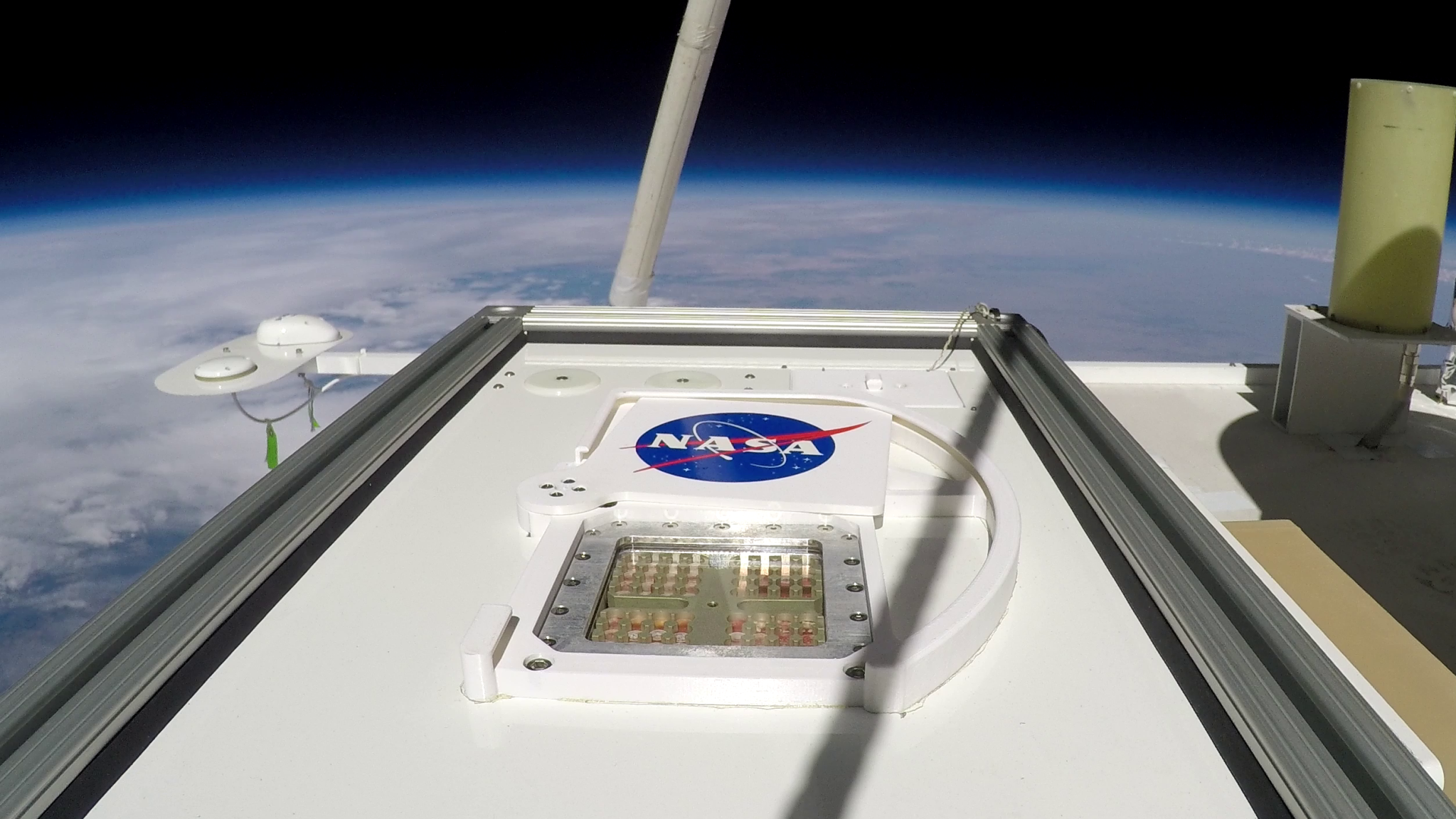
Microbes in Atmosphere for Radiation, Survival and Biological Outcomes Experiment (MARSBOx)
The MARSBOx experiment for aerobiology research – short for Microbes in Atmosphere for Radiation, Survival and Biological Outcomes Experiment – was flown on a NASA scientific balloon mission launched from Fort Sumner, New Mexico, on Sept. 23, 2019. The mission lasted 6.5 hours and reached a sustained altitude of 110,000 feet.
MARSBOx measured the ionizing radiation conditions in the stratosphere using onboard instruments. It also carried nine different types of microorganisms, including bacteria and fungi, in a dormant state that can protect them from many tough environmental conditions. Preliminary results from the flight show that most of the bacteria died, but the fungal spores were able to better withstand the harsh environment at more than 20 miles up. Further analysis will determine which genes may be responsible for survival outcomes.
The MARSBOx team consists of Ames scientists, engineers from NASA’s Kennedy Space Center in Florida and international collaborators from the German Aerospace Center, DLR.
Aircraft Missions
Aircraft Bioaerosol Collector (ABC)
The Aircraft Bioaerosol Collector, or ABC, is an instrument that was custom built at NASA’s Armstrong Flight Research Center to capture and seal up bioaerosol samples from upstream air flowing around a moving aircraft. The ABC can collect samples while flying as high as 8.5 miles, and tackles the difficult challenge of sampling and studying microorganisms afloat at extreme altitudes.
The first mission to use the instrument, ABC-1, was led by members of the Aerobiology Lab at NASA Ames and was designed to discover the types of airborne bacteria present at different levels in the troposphere, the lowest layer of Earth’s atmosphere, and in the lower stratosphere, the layer above the troposphere. The research team installed the ABC on NASA’s C-20A aircraft. The research jet was then flown over regions of California and the western U.S., and the ABC collected air samples during ascent, descent and sustained cruises at altitudes up to almost 7.5 miles.
Scientists were surprised to discover a similar distribution of bacteria in the atmosphere at all altitudes studied. The mission was flown in October and November 2017, and the research was published in August 2018. The data from these flights is freely available on NASA’s space biology database, GeneLab. For more information about this data system and to view datasets for other space biology programs, visit GeneLab.
The Aircraft Bioaerosol Collector has since flown in two more missions, ABC-2 in June 2018 and ABC-3 in August 2018. The results from these missions are now being analyzed.
For researchers:
Research paper: “Airborne Bacteria in Earth’s Lower Stratosphere Resemble Taxa Detected in the Troposphere: Results From a New NASA Aircraft Bioaerosol Collector (ABC),” Frontiers in Microbiology
NASA GeneLab data system entry for ABC, including an overview, protocols, raw data, and analyses following the ABC-1 flights: NASA Aircraft Bioaerosol Collector (ABC)
For news media:
Members of the news media interested in covering this topic should reach out to the NASA Ames newsroom.

